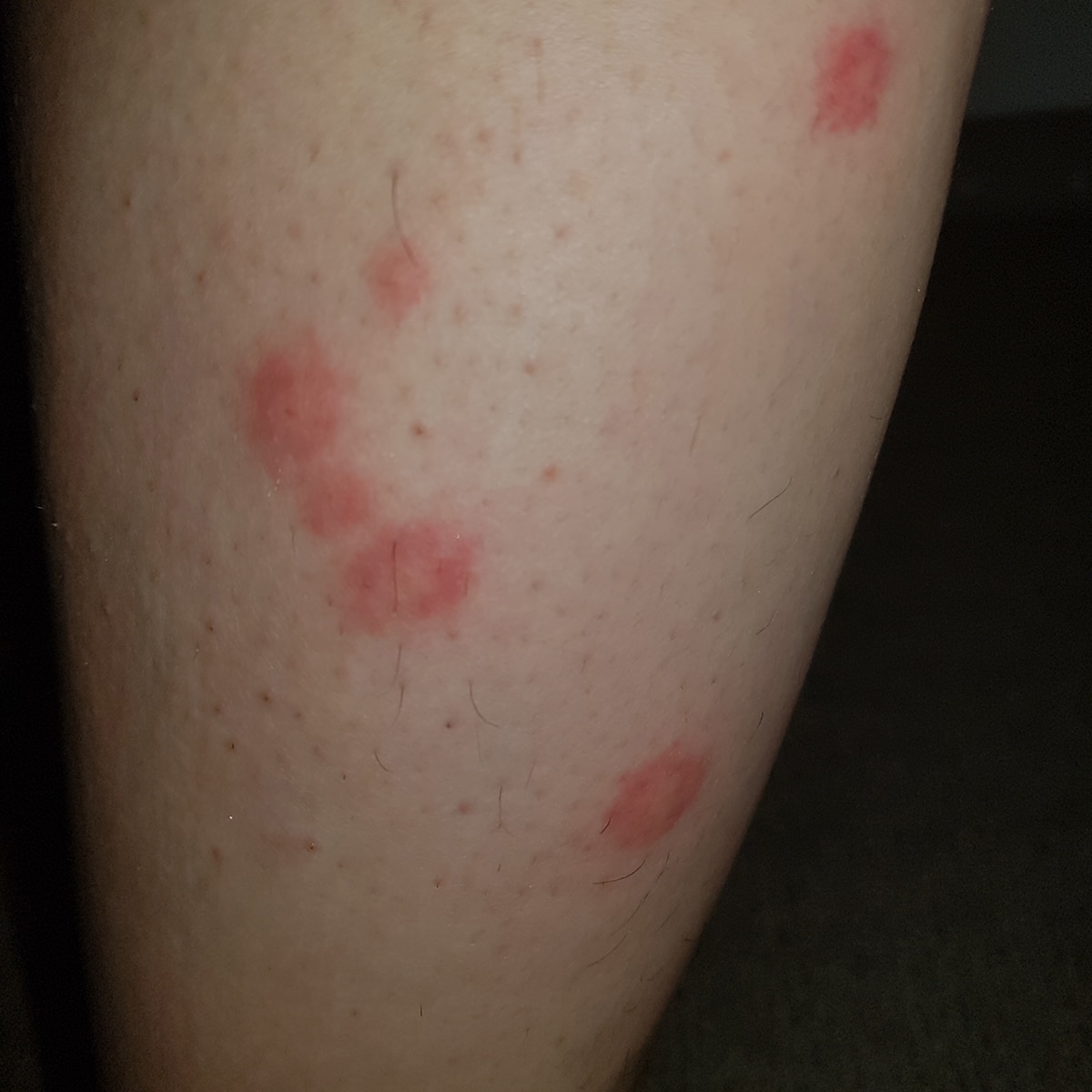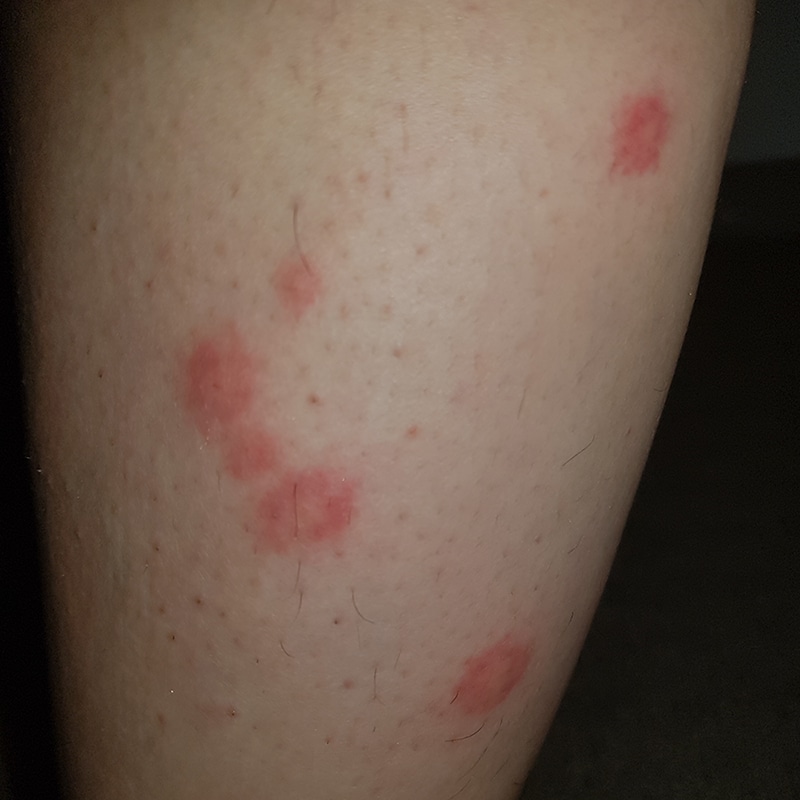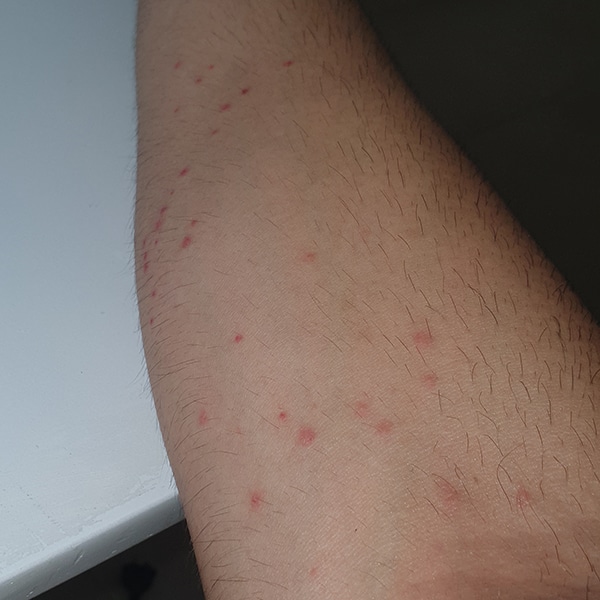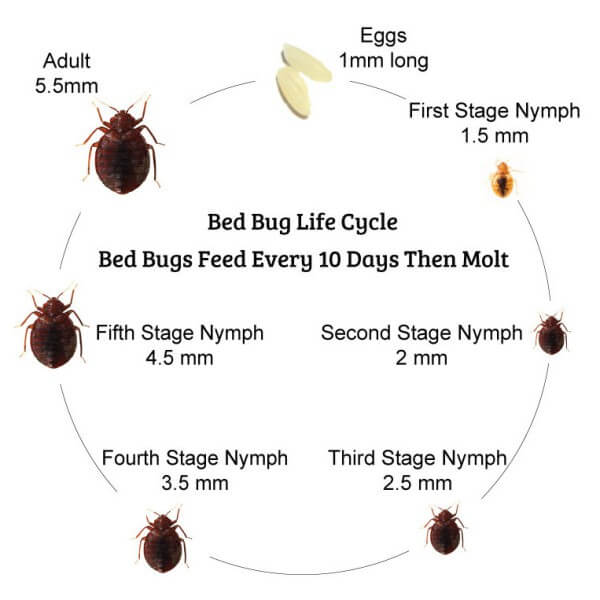
In the article
Bed bugs are sneaking into homes and hotels all over the world. They can be hard to see because the adults are only the size of an apple seed and their reddish brown colour also helps them blend into dark areas. But don’t let their size fool you; these little critters are experts at playing hide and seek. They leave annoying red bumps that can really bug you, ranging from a slight itch to a big irritation.
Let’s dive into everything you need to know about bed bug bites. We’ll cover how to spot them, what they mean for your health, and the best part – how to kick these pests out of your place for good. Whether you’re in the middle of a battle or just want to stay ahead of the game, this guide is for you.
What Do Bed Bug Bites Look Like
Imagine waking up to find red welts on your skin – that’s probably bed bugs, unfortunately. These welts are often red and raised, making their mark in lines or clusters after they feed on humans, hitting up multiple spots in one go. Everyone reacts differently, though. Some folks might just shrug off the bites, barely noticing them, while others might end up with quite the swollen souvenir.
Here’s where it gets interesting. Bed bug bites have a signature style – they love a good line or a zigzag pattern, unlike the solo act of a mosquito or flea bites. And these little vampires are sneaky; you won’t even feel them nibbling because they’re kind enough to numb the area first with a tiny bit of anaesthetic. So, if you’re seeing patterns on your skin and can’t remember the bite, bed bugs might be your covert roommates.

Bed Bug Bites
What It Feels Like to Get a Bed Bug Bite
What’s the main thing you’ll notice if a bedbug decides to snack on you? An itch. And not just any itch, but the kind that has you almost breaking your mum’s heart by ignoring her age-old advice not to scratch. Along with the irresistible urge to scratch, you might see some redness and swelling, turning areas of your skin and parts of your body into itchy landmarks.
These symptoms can pop up pretty fast, sometimes just hours after the bed bugs have had their midnight feast. But sometimes, they’re sneaky and take their sweet time showing up—it could be days before you notice anything. And get this: some lucky folks might not react at all. Yep, they could get bitten and not even know it, which makes these little pests even sneakier.
The range of reactions can vary from a slight annoyance to making you genuinely uncomfortable. Spotting these signs early is crucial; it’s like catching a sneak peek of a problem before it becomes a full-scale invasion.
Are Bed Bug Bites Dangerous
Think about how we all have our own unique no-go foods or sneeze triggers, right? Well, bed bug bites kind of operate on the same personal reaction scale. For most of us, it’s just an annoying itch, but for some, it’s like the itch cranks up to a whole new level, sometimes even bringing blisters to the party. And if you get too carried away with scratching—thanks to those oh-so-itchy bites—you might end up with more than you bargained for, like secondary infections. Imagine accidentally turning a simple bite into a more serious issue because of a nail-induced skin breach.
Now, you might be wondering, “When do I need to start worrying?” Well, if you notice your reaction going from “Ugh, this itches” to “Oh no, why can’t I stop swelling?” or you’re having trouble breathing, or you’re eyeballing what looks like an infection, don’t wait it out. Making an appointment with your doctor is definitely the smart play here.
How to Treat BedBug Bites
First off, let’s dive into the DIY pharmacy in your home. Got a bed bug bite that’s driving you nuts? Try a cold compress. It’s like giving your skin a chill pill, reducing swelling and that urge to scratch. Aloe vera is another superhero in this story, offering a cool, soothing embrace to calm those itchy battle scars.
But what if your home remedies aren’t doing the trick? No worries; the local chemist has your back. Over-the-counter heroes like antihistamine creams or pills come to the rescue, dialling down the itch and swelling. They’re like your body’s bouncers, keeping the bedbug saliva’s effects at bay. For those stubborn, won’t-back-down bites, a dab of hydrocortisone cream can kick the inflammation to the curb.
Sometimes, though, things get a bit too intense for DIY care. If your bite starts acting up with major swelling, relentless itching or skin infection (yikes), it’s doctor’s o’clock. Medical wizards may whip out the big guns, like prescription-strength corticosteroid creams, to show those severe reactions to the door.

Bed Bug Bite On Forearm
How to Keep Bed Bugs at Bay: Your Ultimate Guide
Imagine bed bugs as those uninvited party crashers. The key to keeping them out? Be Sherlock Holmes about it. When you’re hitting the road and staying in hotels, turn detective before you settle in. Dive into an inspection spree – peek into the mattress seams, check the headboard, and scrutinize the furniture like you’re looking for hidden treasure. These critters love a good hideout, so your eagle eyes are your best defence.
Back from your travels? Don’t let those sneaky hitchhikers sneak into your home. Treat your clothes to a spa day in the dryer on high heat – it’s like a sauna session that bed bugs just can’t survive.
On the home front, make vacuuming your new hobby, especially around your bed and any comfy chairs or sofas. Its important to place the contents of the vacuuming in a plastic bag and dispose of in an outside bin. And here’s a pro tip: Suit up your mattress and box spring base in protective bed bug covers – it’s like knight armour but for your bed.
Living in an apartment? Those shared walls are like highways for bedbugs. If your neighbour’s waving the white flag of infestation, up your game. It’s defence mode time.
And oh, that second-hand furniture deal that seems too good to be true? It might just be a Trojan horse for bed bugs. Give it the third degree before you let it cross your threshold. Inspect like your peace of mind depends on it – because it kind of does!
Bed Bug Infestations: A DIY Guide
First up, playing detective. Have you noticed signs of a bedbug infestation, like tiny blood spots on your sheets or pillowcases? That’s bedbug graffiti. And keep an eye out for their dark, rusty spots of excrement – it’s like their way of tagging mattresses, sheets, headboards, upholstered furniture, and even walls.
These critters are masters of hide-and-seek, loving nothing more than to snuggle into the nooks and crannies around your bed. So, pull out your flashlight and start your search party – dive into the mattress seams, sift through couch cushions, peek into curtain folds, and don’t skip the space behind your wall art.
Now, for the fun part: launching your counterattack. Sure, you could go the professional exterminator or pest control route with their chemical warfare or heat treatments, but why not take matters into your own hands? The DIY bed bug treatment route not only puts you in the driver’s seat but also tends to be quicker and more direct.
Get ready to vacuum clean like you’ve never vacuumed before, wash your fabrics in the hottest setting, dust that bed bug killer powder into all the cracks and crevices around your bed, and fortify your sleeping area against these tiny invaders. This isn’t just about battling the current infestation; it’s about setting up your space to keep them at bay long term. And the best part? You get to avoid the hassle and upheaval that often comes with professional extermination, keeping your home calm, collected, and, most importantly, bedbug and poison-free.
Bed Bugs Lifestyle and Hideouts
These tiny freeloaders aren’t fussy about their living quarters. Whether your place is spotless or a bit on the chaotic side, they’re all in if they can snag a bite to eat – and by that, I mean human blood.
Once they’ve moved in, they like to keep close to their snack bar (that’s you), and set up camp in mattresses, bed frames, headboards, and even those innocent-looking side tables. But their sneakiness doesn’t stop there; they can squeeze into the tiniest of cracks, like behind electrical outlets or beneath that peeling wallpaper you’ve been meaning to replace.
Here’s a quick rundown on the bed bug life cycle: from egg to full-blown bedbug, it can take just about a month if they’re living in the lap of luxury (think warm temps and plenty of feeding opportunities). An adult bedbug can hang around for four to six months and, in some cushy conditions, up to a year.
And guess what? They’re creatures of the night. These guys clock in for dinner at your expense, taking a leisurely 3 to 12 minutes to dine under the cover of darkness. This means they’re out and about when you’re likely fast asleep. Just because you don’t spot them during your daytime activities doesn’t mean they’ve checked out.

Bed Bug Life Cycle
Your Burning Questions About Bedbug Bites Answered
Wondering if those itchy bumps are a souvenir from bedbugs? Let’s dive into the nitty-gritty and clear up the mysteries surrounding these pesky bites.
How do I know if I’ve been a bed bug buffet?
Those itchy welts on your skin, lining up like they’re queuing for a concert or huddling together in a cluster, are the telltale signs. You’ll find them gatecrashing areas all over your body including your face, neck, arms, and hands.
Do these bites come with extra unwanted gifts (like diseases)?
Here’s some good news: Bedbugs aren’t in the business of spreading diseases through their dining habits.
Why do I feel like I’ve become a scratching DJ?
Blame it on the bedbug’s saliva. It’s like an uninvited guest for your immune system, which responds to the itch of the century as a defence mechanism.
Will these spots make my skin their forever home?
Nope, they’re not sticking around for good. These bites usually fade away after a few days to a couple of weeks, especially if you resist the scratch and keep them clean.
What’s my game plan if I think bed bugs are crashing at my place?
Turn your bedroom into a crime scene investigation area. Search for clues like tiny, dark brown bugs or incriminating blood spots on your mattress and sheets.
Are beds their only hideout?
Despite their misleading name, these critters are more adventurous. They’ll make themselves at home in couches, luggage, clothes, and even behind your precious picture frames.
Can I play doctor and treat these bites on my own?
Absolutely. Arm yourself with anti-itch creams and antihistamines from the pharmacy. But if the bites throw a massive allergic reaction party, it’s time to call in the professionals.
Wrapping It Up: Your Bed Bug Battle Plan
Yes, bed bugs are like ninjas – sneaky, stealthy, and experts at hiding. But guess what? You’ve got the upper hand now. Knowing where they hang out, how they behave, and the telltale signs of their uninvited visits gives you the power to stop them in their tracks. Regular check-ups of your cozy corners and calling in the pros when things get out of hand are your best bets to keep your home bedbug-free.
Got bitten? Most of the time, those itchy badges of honour can be tackled with stuff you’ve got in your medicine cabinet or kitchen. But keep your eyes peeled for any over-the-top reactions – that’s your cue to get some expert advice.
With this arsenal of knowledge and strategies, you’re more than ready to face any bed bug challenges head-on. Remember that knowledge is power, and now you’re powered up to protect your peace and sleep tight without any bed bug bites.
Are You Looking for an Organic DIY Treatment?
Watch Our DIY Treatment Video For An Ensemble Bed
Watch Our DIY Treatment Video For A Bed with Slats



Jennu says
Do bed bug bites go away on their own, or is treatment required for full recovery?
Tony Abrahams says
Hi Jennu. Bed bug bites usually go away on their own in a few days to a week. The itching and redness just fade away. But if you want to feel better faster, you can use things like anti-itch cream or take antihistamines for allergic reactions. If you scratch too much and the bites get infected, you might need to see a doctor. So, you don’t have to get treatment, but it can definitely help make the bites feel better quicker!Regards BBB
Narelle says
Hi team. I’ve just found a bed bug but I don’t have any bite marks. I don’t understand why I haven’t been bitten.
Tony Abrahams says
Hi Narelle. It’s possible to have bed bugs without getting bite marks. Some people don’t react to the bites, so no visible marks appear. Bed bugs also don’t bite every night. Even if you haven’t been bitten, it’s important to take action now to prevent an infestation from spreading. Set up bed bug traps, mattress barriers, and treat the area to protect yourself
Michelle MacLean says
Very very keen to try this bed bug killer on mattresses and bases and lounges even pls
Tony Abrahams says
Hi Michelle. Please don’t use the powder on your mattress. Use a mattress cover instead. You can use it on your bases and lounges.
Bed Bug Barrier says
Hi Gregory
Flea bombs do not kill bed bugs.
Regards
Tony